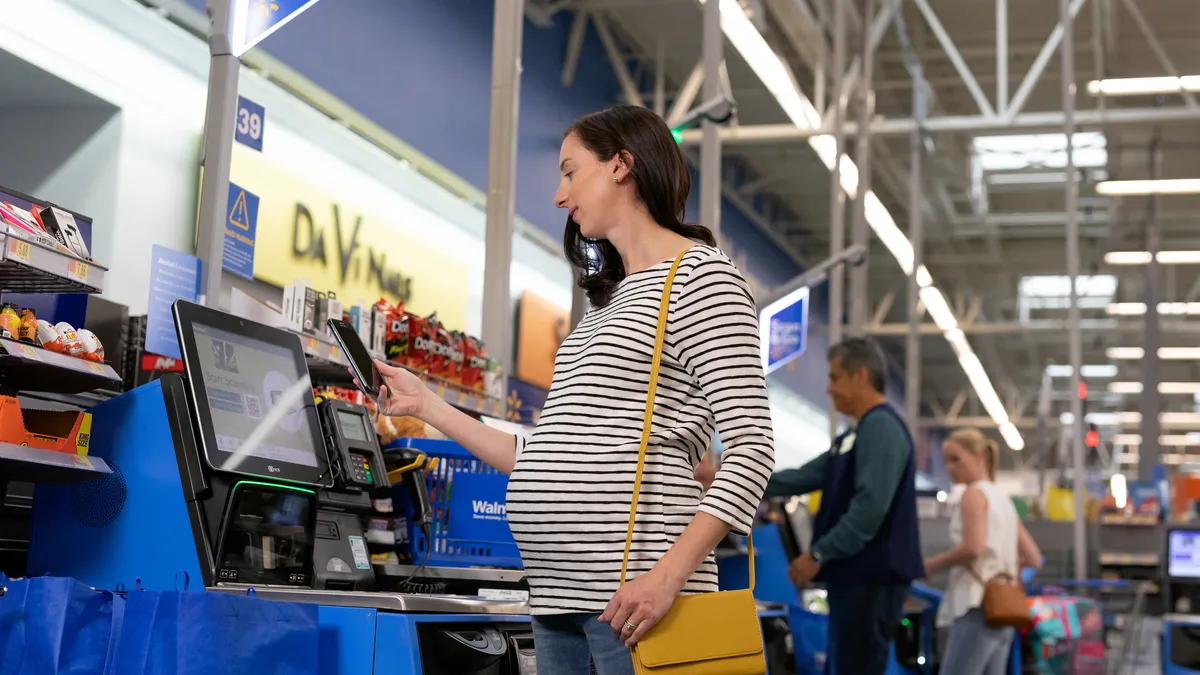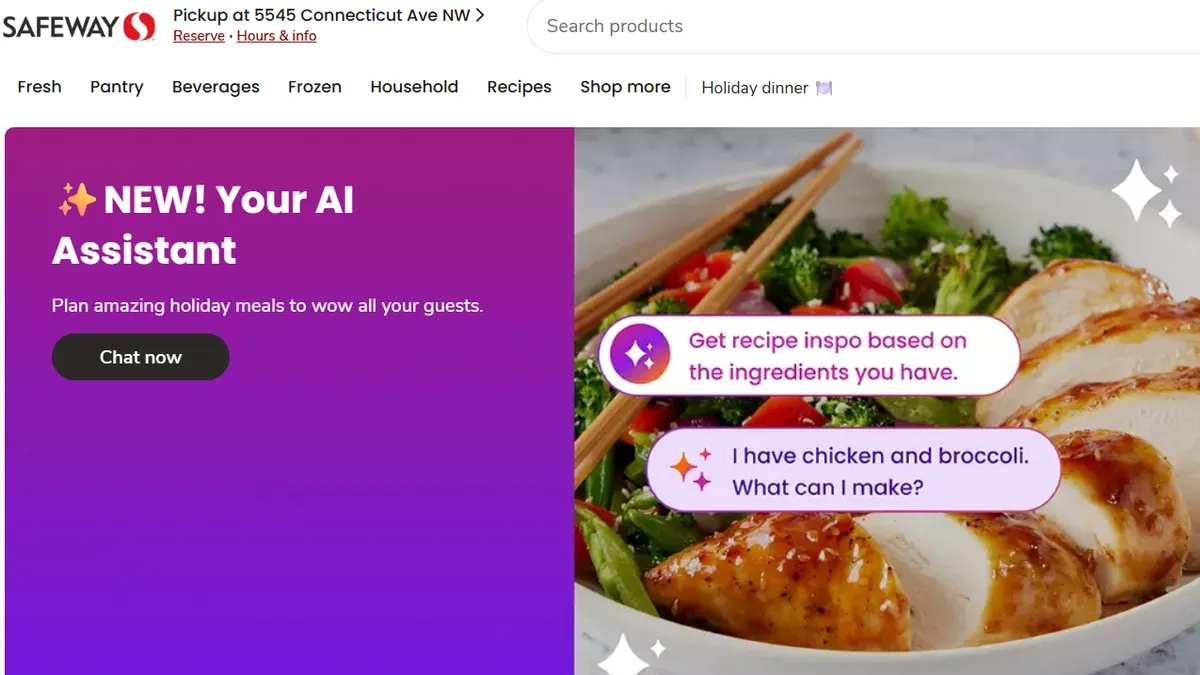In the face of the COVID-19 pandemic, grocers have made adjustments to protect those the Centers for Disease Control and Prevention defines as high-risk individuals. The most popular of these steps is carving out special morning hours strictly for seniors, pregnant women, disabled individuals, those who are immunocompromised and who have pre-existing conditions.
But this is an imperfect system, as many vulnerable shoppers aren’t able or are afraid to venture to the store, and online shopping isn’t always an option due to technological restrictions, long wait times and limited order windows. Health experts, and even a few grocery chains, have also questioned the wisdom of allowing groups of at-risk shoppers into aisles at the same time.
In response, a growing number of companies, from bootstrapped startups to large grocers, have developed alternative services and workarounds to get vulnerable shoppers the products they need.
Prioritizing high-risk customers
A growing list of retailers are reserving curbside pickup hours for at-risk shoppers in addition to in-store hours. This includes Walmart, Whole Foods and Hy-Vee. Walmart’s service coincided with new marketing materials aimed at first-time customers, including a YouTube instructional video and pop-up message on its main grocery page offering assistance.
Contactless home delivery and curbside services are in many ways ideal options for at-risk shoppers. However, grocers have faced a crush of online demand that has impacted their ability to fill orders in a timely manner. And not all seniors and disabled individuals can get into their car and drive to stores.
In response, some companies have set aside special product bundles and online services for at-risk shoppers. In March, H-E-B launched a dedicated delivery service for seniors 60 years and older offering a limited assortment of items that senior shoppers can order via phone, the H-E-B app or its website. H-E-B has volunteers operating phone lines and Favor delivering orders within a few hours. California-based Raley's sells two “essentials” bags for seniors that includes grocery items and fresh produce.
Bill Bishop, chief architect with Brick Meets Click, said that Favor has doubled its geographic service area during the pandemic. He cited H-E-B and Trader Joe’s, which has placed stringent limits on the number of shoppers allowed in the store at one time, as two grocers that have excelled in serving vulnerable customers.
“Just extending the opportunity to do delivery just makes it much more attractive for high-risk customers,” Bishop told Grocery Dive.
Peter van Stolk, CEO of Canadian online grocer Spud, said it can be challenging for grocers right now to provide the responsive service they want to provide for at-risk shoppers using the same e-commerce resources that serve the rest of their customers. Last month, Spud started a separate delivery service offering boxes of essential products like pasta, oatmeal and fresh fruit. The service, which uses a dedicated site and runs out of two newly outfitted warehouses in Vancouver and Calgary, is open to all shoppers in those cities but provided at cost to front-line workers and at-risk shoppers.
Van Stolk said organizations like hospitals and nonprofits sign up with Spud, which then supplies electronic ordering codes and coupons to individuals who want to use the program. Working with organizations allows Spud to reach more people needing essentials, Van Stolk said, while the order codes ensure the company is precisely meeting demand.
Shoppers are also using the service to send boxes of groceries to others, and a portion of each purchase goes toward a donation to community organizations.
“People are buying boxes for their friends and loved ones who are in quarantine,” van Stolk told Grocery Dive.
Pradeep Elankumaran told Grocery Dive that his online grocery service, Farmstead, has seen a wave of new customers sign up for service, including many considered high risk by the CDC.
Farmstead has put all new customers on a waitlist as it opens additional delivery spots. But vulnerable shoppers get bumped to the front of the line. The e-grocer relies on an honor system for verification, Elankumaran said, because it doesn’t want shoppers to feel uncomfortable disclosing what makes them high risk.
"It is clear that there is a part of the population that needs to be serviced differently. There is almost a sense of moral obligation," he explained.
Third-party services and international grocers
To improve the grocery shopping experience for senior shoppers, some companies and organizations that didn’t previously cater to grocery needs have launched new delivery services that interface with retailers and simplify the experience for elderly customers.
Go Go Grandparent, a mobility management program that calls Lyft and Uber rides for its senior clients, recently expanded into grocery delivery. The company planned to launch its grocery program within the next twelve months, but the pandemic stepped up the rollout, Justin Boogaard, the company’s co-founder, told Grocery Dive. Its grocery program provides seniors with food and home supplies like cleaning products.
Go Go Grandparent works with grocery retailers and delivery companies like Amazon, Walmart, Instacart and Shipt to place orders on behalf of customers and choose the most convenient or soonest possible delivery time.
“We're trying to keep tabs on what a client needs, specifically with incontinence products that can be sort of a sensitive thing to request, and clients are making sure that we're on top of that so that products are automatically showing up to them when needed,” said Boogaard.
If a pickup slot is available sooner than a delivery slot, Go Go Grandparent will find an Uber or Lyft driver to go pick up the order and drop it off at the shopper's location.
"It is clear that there is a part of the population that needs to be serviced differently. There is almost a sense of moral obligation."

Pradeep Elankumaran
Co-founder and CEO, Farmstead
Boogaard said the dedicated morning hours many grocers offer for seniors is a good option for those between the ages of 60 and 75. But shoppers in their late seventies and above, which make up the majority of Go Go Grandparent’s clientele, are often unable or unwilling to visit stores.
As online grocery services have struggled to meet demand, a plethora of organizations and individuals, including police officers and high school seniors, have stepped in to provide home delivery for at-risk consumers. Students at Roosevelt High School in Portland, Oregon created a free service that senior citizens can call and place an order to be fulfilled at their local grocer. In West Hollywood, California, the city’s on-demand transportation service is now offering free delivery from Gelson’s, Pavilions and Sprouts Farmers Market.
Grocers overseas, meanwhile, have devoted additional store hours, supply chain bandwidth and e-commerce services to at-risk shoppers and frontline workers. In the U.K., not only do chains have dedicated shopping hours for seniors and vulnerable shoppers, but also National Health Service workers and social workers, Laura Jacobson, head of U.K. retail insight at IGD, told Grocery Dive in an email. They allocate different days to different groups to avoid contact with the vulnerable, Jacobson explained.
Grocers abroad have also simplified store payments during COVID-19, she added. For shoppers who have friends, families and neighbors shopping on their behalf, Asda is offering gift-card style e-cards that are purchased online and e-mailed to the at-risk shopper, Jacobson said.
In Australia, Woolworths has designated 41 out of its nearly 1,000 stores as “priority delivery hubs” for filling online orders for vulnerable shoppers. These locations close down early each day to spend time picking and packing orders for elderly, disabled and immunocompromised customers.
Sainsbury's in the U.K. has given at-risk shoppers priority access to delivery slots. But unlike Farmstead and other grocers, Sainsbury isn’t relying on the honor code. It is verifying vulnerable and elderly shoppers with the help of the government and has phone lines open to those who have trouble placing orders using digital methods.
Bishop believes that international grocers have advantages that U.S. grocers don’t. He said that the grocery industry in most other countries is more consolidated and that companies have more financial resources to devote to dedicated services, not to mention a large pool of elderly shoppers loyal to their chains.
“Most U.S. retailers are concentrating on just running a good store. That's what they were known for. That's what they're good at,” said Bishop.
Similarly, van Stolk credited grocers in the U.S. and Canada for offering dedicated store hours and offering additional customer support for at-risk shoppers. While his company has the back-end technology and customer demand to support a separate, temporary service, he acknowledged that not every retailer has the ability to do this.
“Everybody has the assets they have, and they’re trying to utilize those assets the best they can,” van Stolk said.
Jeff Wells contributed reporting to this story.



















